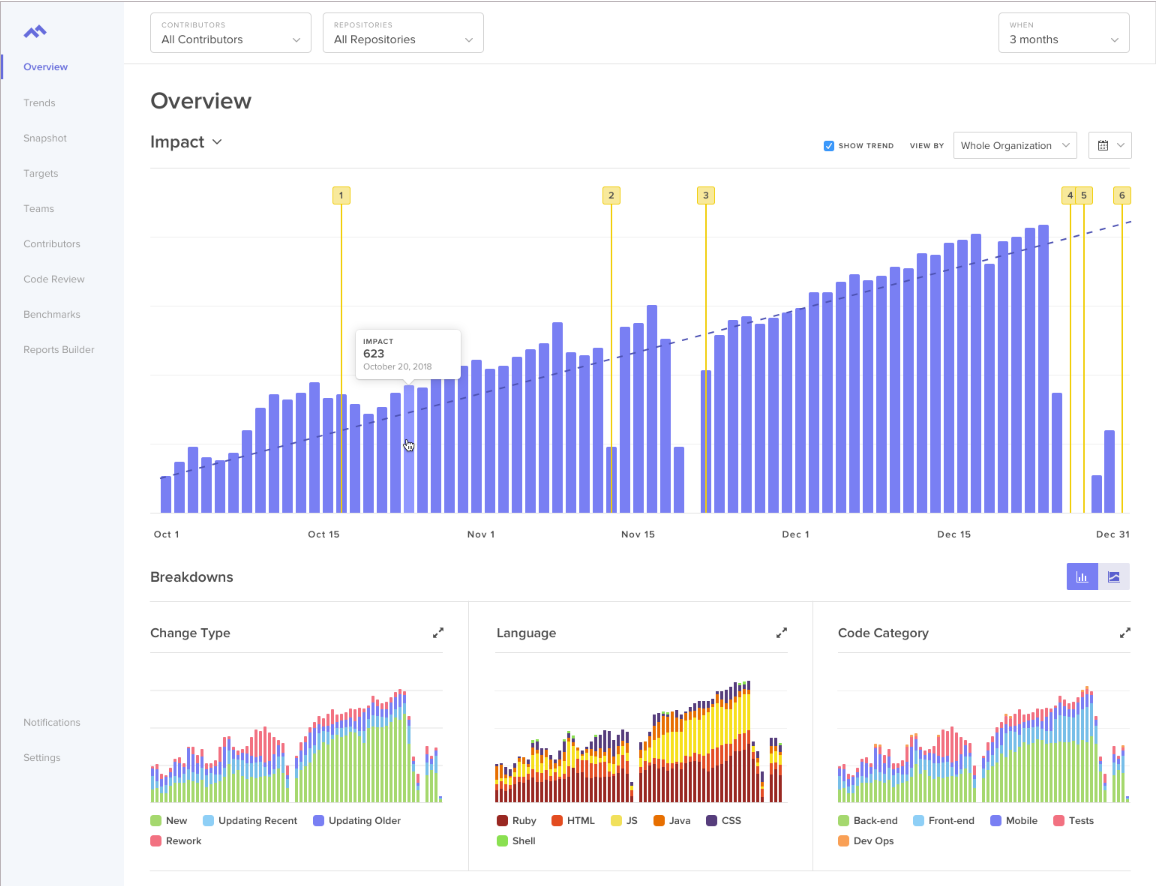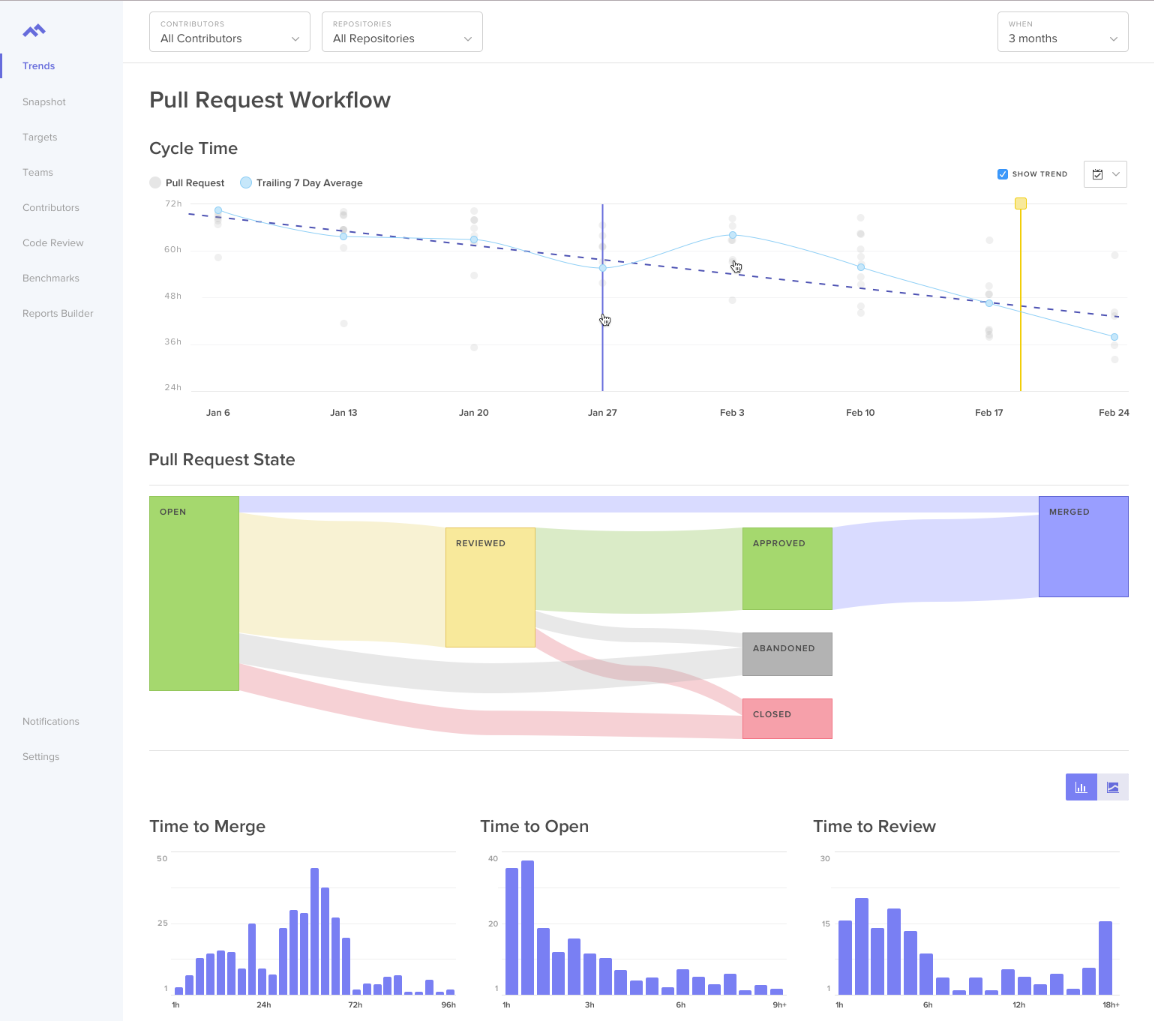The Challenge
The engineering team was bogged down by 10-years worth of technical debt.
Kickstarter has been around since 2009, so the engineers frequently worked with legacy code. “To an engineer, it’s so obvious when a piece of code is brittle, but it’s really hard to advocate for putting engineering resources into solving technical debt.”
When Mark first joined Kickstarter as VP of Engineering, he was dedicated to aligning the engineering team with business objectives.
Mark started by re-organizing teams and giving each team ownership over a different part of the product. “Effective engineering leadership is being outcome-oriented,” says Mark, “which means the objective is not to ask, ‘Is the code good?’ but to ask ‘Is Kickstarter good?’”
While Mark had little trouble getting teams to understand business objectives, getting the executive team to understand engineering problems proved rather difficult.
Kickstarter has been around for about 10 years, so a big portion of the codebase was troublesome to work with. Engineers were constantly bogged down because of legacy code, but the executive team didn’t want to waste too much time on refactoring. They were more focused on getting new features out to customers.



